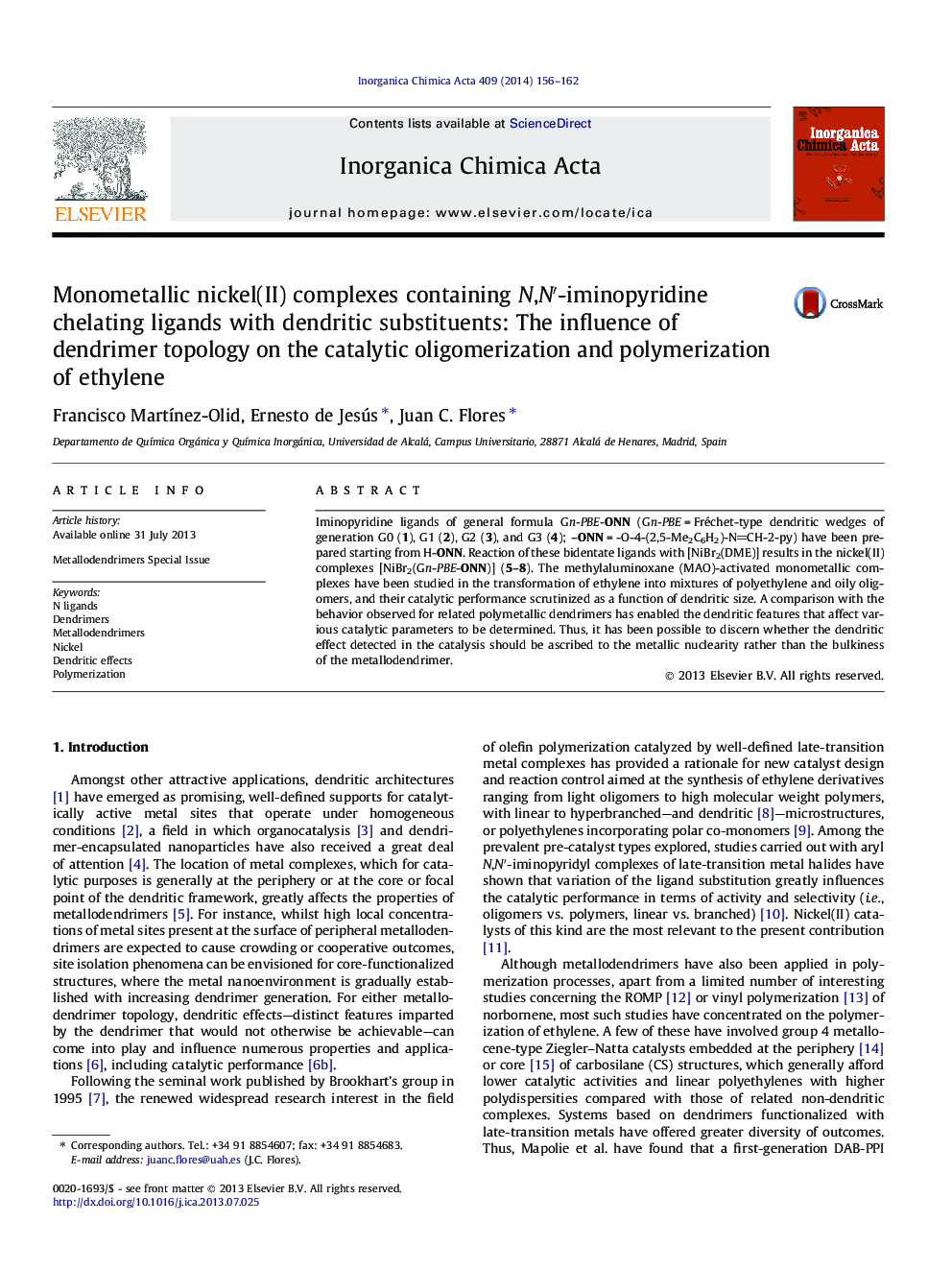| Article ID | Journal | Published Year | Pages | File Type |
|---|---|---|---|---|
| 1310103 | Inorganica Chimica Acta | 2014 | 7 Pages |
•The synthesis of iminopyridylnickel complexes bonded to the focal point of poly(aryl ether) dendrons is described.•These monometallic dendrimers are used as catalysts in the oligomerization/polymerization of ethylene.•The catalytic outcomes are compared with those reported for related peripherally substituted polymetallic dendrimers.•Dendritic effects arising due to the size and nuclearity of the dendrimer are differentiated and discussed.
Iminopyridine ligands of general formula Gn-PBE-ONN (Gn-PBE = Fréchet-type dendritic wedges of generation G0 (1), G1 (2), G2 (3), and G3 (4); –ONN = -O-4-(2,5-Me2C6H2)-NCH-2-py) have been prepared starting from H-ONN. Reaction of these bidentate ligands with [NiBr2(DME)] results in the nickel(II) complexes [NiBr2(Gn-PBE-ONN)] (5–8). The methylaluminoxane (MAO)-activated monometallic complexes have been studied in the transformation of ethylene into mixtures of polyethylene and oily oligomers, and their catalytic performance scrutinized as a function of dendritic size. A comparison with the behavior observed for related polymetallic dendrimers has enabled the dendritic features that affect various catalytic parameters to be determined. Thus, it has been possible to discern whether the dendritic effect detected in the catalysis should be ascribed to the metallic nuclearity rather than the bulkiness of the metallodendrimer.
Graphical abstractMonometallic nickel(II) complexes containing an aryl-N,N′-iminopyridine ligand substituted with Fréchet-type dendrons are described. A comparison with the behavior observed for related polymetallic dendrimers has enabled to discern whether dendritic effects detected in catalysis should be ascribed to the metallic nuclearity rather than the bulkiness of the metallodendrimer.Figure optionsDownload full-size imageDownload as PowerPoint slide
